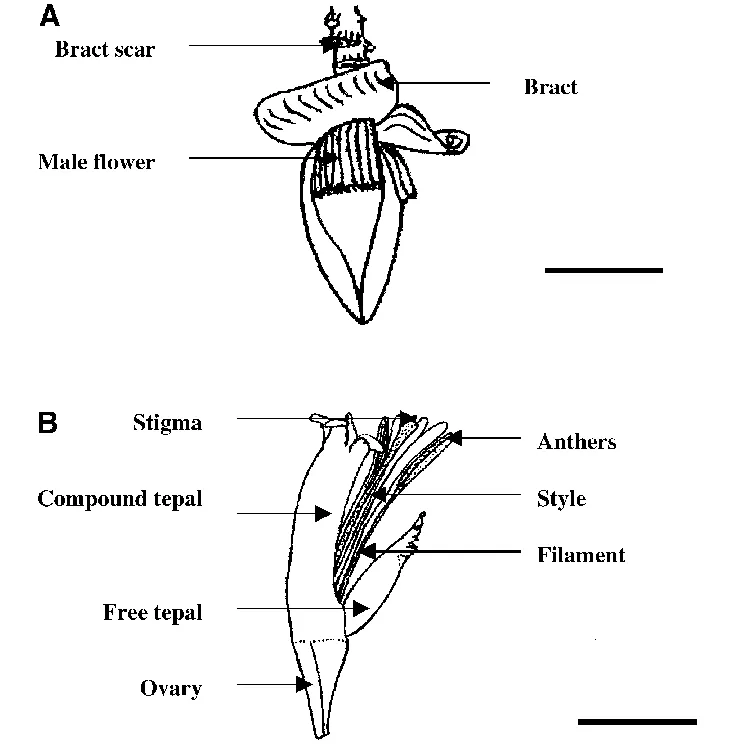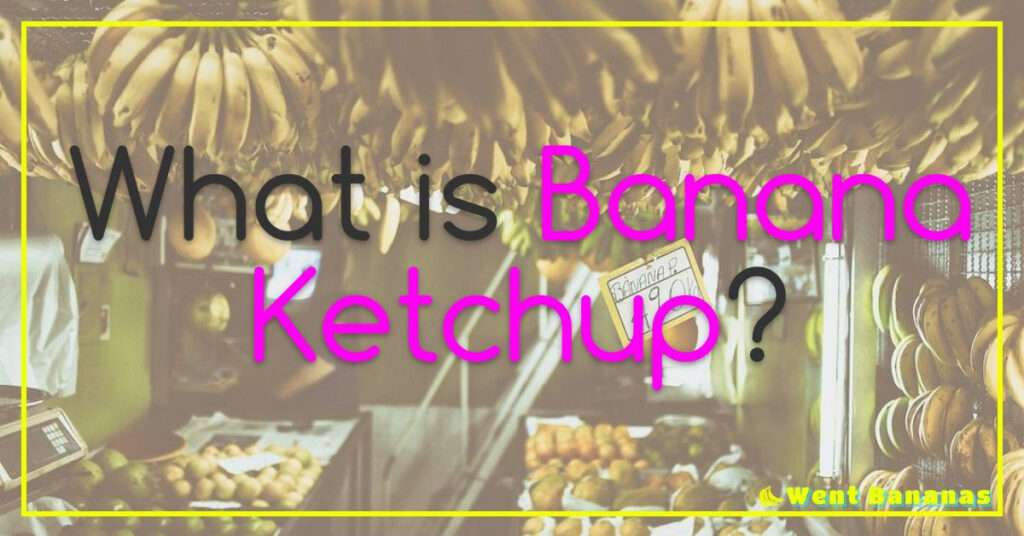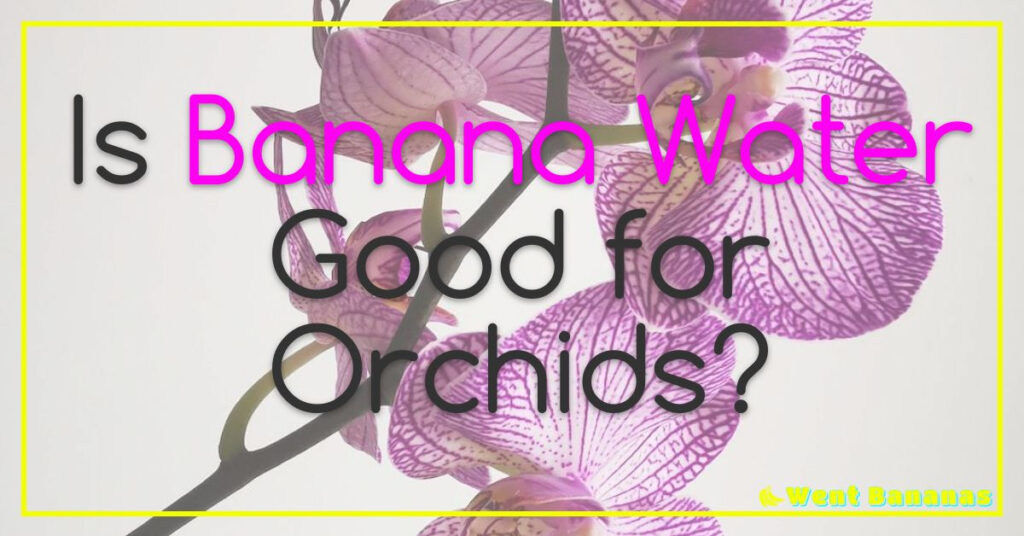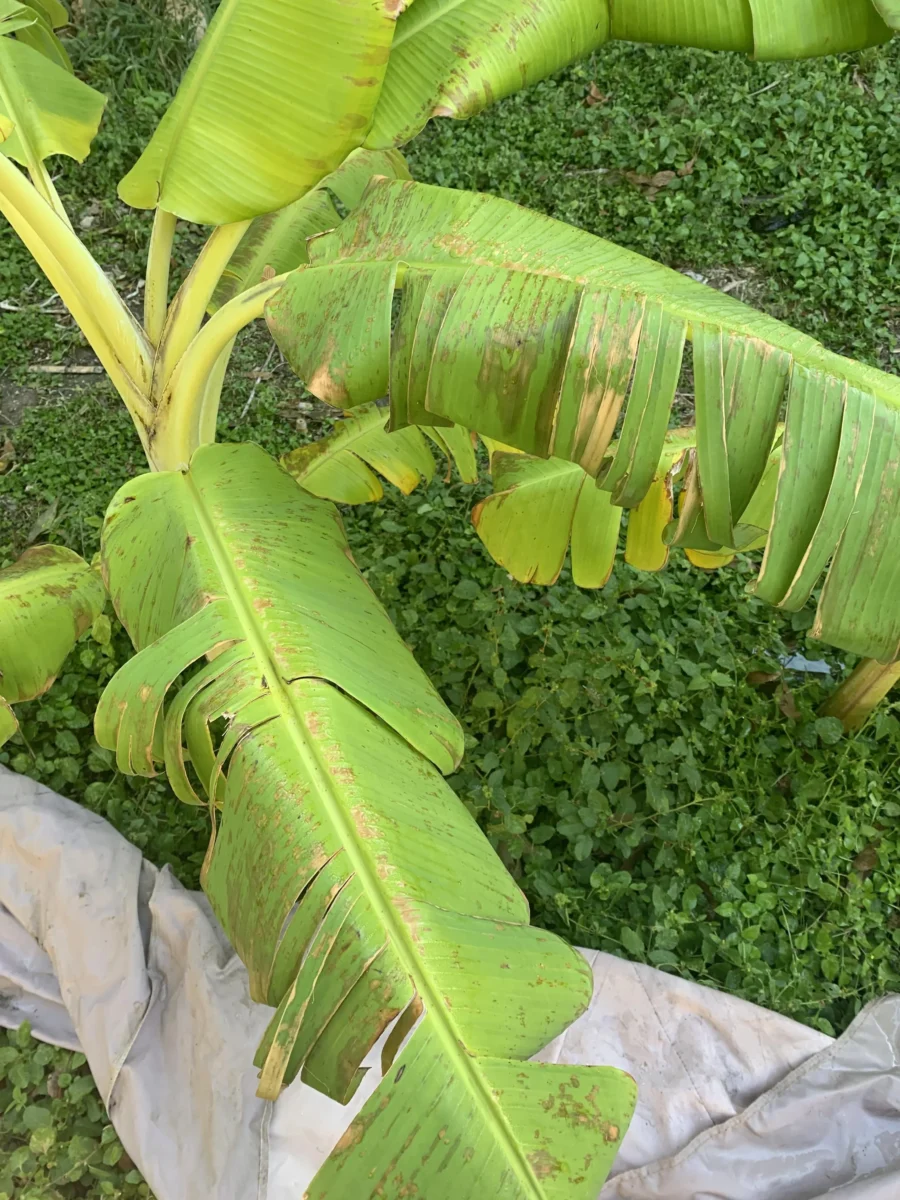Discover the Versatile Parts of a Banana Flower and Their Health Benefits
Bananas are a fruit that most of us are familiar with, but have you ever heard of banana flowers? These unique and versatile parts of the banana plant are used in cooking and have many health benefits. In this article, we’ll explore the different parts of a banana flower, including the bracts, florets, and more, and discuss how they are used in cuisines around the world. We’ll also delve into the nutritional and medicinal properties of banana flowers and provide tips on preparing and cooking them. So if you’re looking to expand your knowledge of this tropical fruit and its lesser-known parts, keep reading!
Introduction to Banana Flowers: What are they and where do they come from?
Banana flowers, also known as banana blossoms, are the beautiful purple-red flowers that grow at the end of a banana cluster. They are a delicacy in many parts of the world, especially in Southeast Asia and India.
The banana flower is rich in vitamins and minerals, making it a nutritious addition to any diet. It is high in fiber, potassium and magnesium which helps regulate blood pressure levels.

Interestingly enough, despite being widely consumed today worldwide their origins can be traced back to Southeast Asia where they have been used for centuries as both food and medicine.
Aside from its nutritional value, banana flower has medicinal properties too. It is believed to help reduce inflammation and fight infections due to its antioxidant properties that prevent cell damage caused by free radicals.
In conclusion, Banana flowers may not be common knowledge for everyone but are definitely worth exploring for those looking for healthier food options or simply wanting to expand their palate into exotic foods.
Identifying different parts of a banana flower, such as the bracts, florets, and more.
Banana flowers are a fascinating and intricate part of the banana plant. They are composed of several different parts, each with their own unique characteristics and functions.
The outermost layer of the banana flower is known as the bracts. These are thin, papery structures that surround the rest of the flower. They serve to protect and support the inner structures, as well as to attract pollinators such as bees and butterflies.
Inside the bracts are several rows of small florets. These tiny flowers are arranged in a spiral pattern around a central stem, much like a pinecone or sunflower. Each floret contains both male and female reproductive organs, making it possible for them to self-pollinate or be pollinated by insects.
At the center of the flower is a large structure known as the stigma. This is where pollen from other flowers collects in order to fertilize the ovules inside each floret. Surrounding the stigma are several more layers of protective bracts and sterile flowers, which help to ensure successful reproduction.
Overall, understanding these different parts of a banana flower can help us appreciate just how complex and beautiful these plants truly are. And for those interested in growing bananas themselves, knowing how to properly care for these delicate flowers can make all difference when it comes to producing healthy fruit crops.
Uses of the different parts of a banana flower in cooking around the world
Banana flowers are a versatile and nutritious ingredient used in cooking around the world. From Southeast Asia to South America, different parts of the banana flower are utilized in unique and delicious ways.
In India, the tender inner petals of the banana flower are used to make a popular dish called vazhaipoo vadai. The petals are mixed with lentils and spices, then deep-fried until crispy. In Thailand, banana flowers are sliced thinly and added to salads alongside papaya and other vegetables.

In Latin America, banana flowers are often used as a filling for tamales or empanadas. The outer bracts of the flower are removed to reveal a soft core that can be cooked with onions and spices for savory dishes.
Even in West Africa, where bananas aren’t traditionally grown, the leaves of the plant can be used as cooking vessels for stews or wrapped around grilled meats like kebabs.
Not only do these different uses showcase the versatility of bananas as an ingredient, but they also highlight how food traditions have evolved over time across cultures. So whether you’re looking to try something new or simply want to learn more about this fascinating fruit, exploring its many culinary uses is sure to delight your taste buds!
The benefits of consuming banana flowers include their nutritional value and medicinal properties.
Banana flowers, also known as banana blossoms, are an often overlooked part of the banana plant that has been used for centuries in traditional medicine. Not only are they delicious and versatile in cooking, but they also offer numerous health benefits.
One of the most notable benefits of consuming banana flowers is their high nutritional value. They are a rich source of antioxidants, vitamins A and C, iron, fiber, and protein. Studies have shown that consuming these flowers can help boost immunity levels and reduce inflammation throughout the body.
In addition to their nutritional value, banana flowers also possess medicinal properties that can help with various health conditions. They contain compounds such as ethanolic extracts and flavonoids which have been shown to have anti-diabetic effects by lowering blood sugar levels.

« if banana is apple apple is grapes
The Ultimate Guide to Knowing When Your Banana Bread is Done: Tips and Tricks for Perfect Baking! »
Furthermore, research has found that these flowers can aid in digestion by increasing bile production and reducing stomach acidity. This makes them an excellent addition to any diet for those suffering from digestive issues such as bloating or constipation.
Overall, incorporating banana flowers into your diet can provide numerous health benefits while adding a unique flavor to your meals. Whether you choose to consume them raw or cooked in various dishes such as curries or salads, you’ll be doing your body a favor by enjoying this underappreciated part of the beloved banana plant.
Here are some tips on how to prepare and cook with banana flowers.
Banana flowers, also known as banana blossoms, are a versatile and nutritious ingredient that can add depth and flavor to your dishes. However, preparing and cooking with banana flowers can be intimidating for those unfamiliar with this tropical ingredient.
To start, select fresh banana flowers that have a firm texture and bright purple color. To prepare the flower for cooking, remove the outer layers of leaves until you reach the tender inner petals. Then, slice off the stem and discard any tough or fibrous parts.
When it comes to cooking with banana flowers, there are endless possibilities. They can be used in salads, curries, stir-fries or even as a meat substitute in vegan recipes. To prevent discoloration during cooking, soak the sliced flower in water mixed with lemon juice or vinegar before adding it to your dish.
One popular way to cook banana flowers is by making a traditional South Indian dish called Vazhaipoo Poriyal. This recipe involves sautéing chopped onion and garlic in oil before adding thinly sliced banana flower petals along with turmeric powder and salt. The dish is finished off by sprinkling grated coconut over the top.
By incorporating these tips into your culinary repertoire, you’ll be able to confidently cook with this unique ingredient while enjoying its health benefits such as improved digestion and reduced inflammation levels. So why not try out some new recipes featuring deliciously cooked bananas today?
Check out our other articles to find out even more about banana.
We hope this article has been a helpful introduction to the wonderfully unique and versatile banana flower! Not only can it be used in a variety of delicious meals, but its medicinal properties make it an incredibly beneficial part of your diet. For more on bananas, their flowers, uses and benefits – check out our other articles to find out even more!











